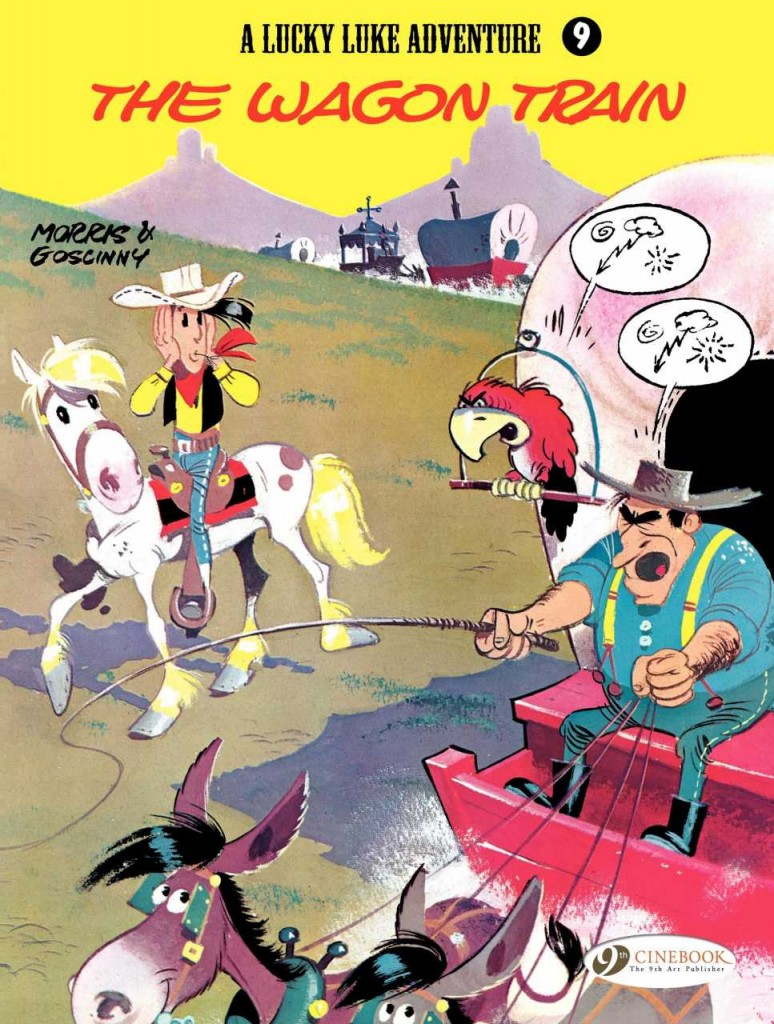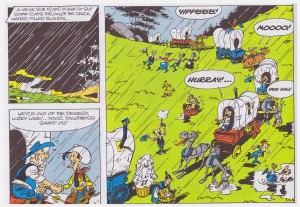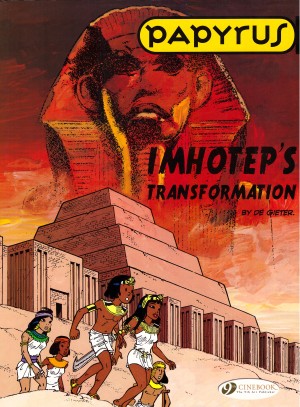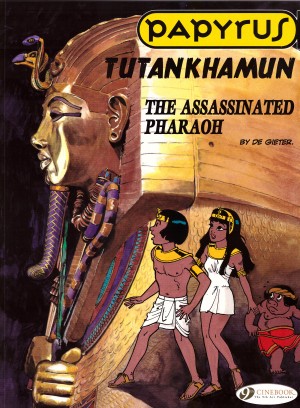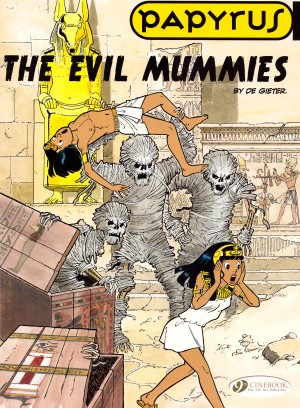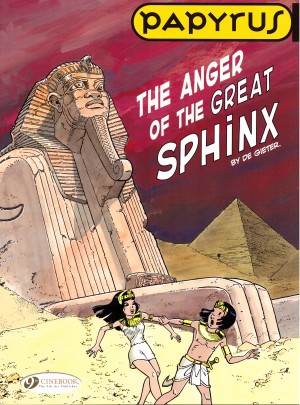Review by Frank Plowright
A frontier Wagon Train consisted of a group of settlers moving West across the USA. In the 1800s before the railroads, this was a journey fraught with dangers. Travellers feared attacks from Native Americans, animals, and packs of bandits, and those protecting them were handsomely paid. René Goscinny and artist Morris seized on this theme for the 24th Lucky Luke story, originally serialised in Spirou in 1963, and first published as a French album in 1964.
Luke reluctantly agrees to lead a group of settlers to California. All life is here, from a teacher giving lessons in her wagon to an undertaker pulling his distinctively kitted out hearse. Goscinny spices matters up with the inclusion of a nutty professor whose methods of improving the journey invariably go wrong. It becomes apparent from the early days, though, via acts of vandalism, that there’s someone who wants to slow progress down.
Morris’s cartooning is spectacular and packed with quirky visual asides. At one point the wagon train is approaching a small town. Leaning out of a window, but talking back into the room, one delighted inhabitant announces their arrival, a couple of aces falling from his shirt sleeve. A wagon completely submerged as it crosses a river emerges with two panhandlers attached, examining their pans.
Goscinny works to a formula, so to regular readers the identity of the saboteur won’t come as much of a surprise, but then that’s not the point of the stories. This is a particularly episodic narrative, where it’s a little more obvious than some books that the scripts were designed to deliver a weekly punchline. This is also revealed via several set-up and reveal sequences where characters are little seen beyond their initial appearance prior to a later pivotal intervention. This is all minor carping, though, as all the Goscinny and Morris stories achieve ‘very good’ as a minimum standard. Ghost Town is next if you’re following the original publication order.
